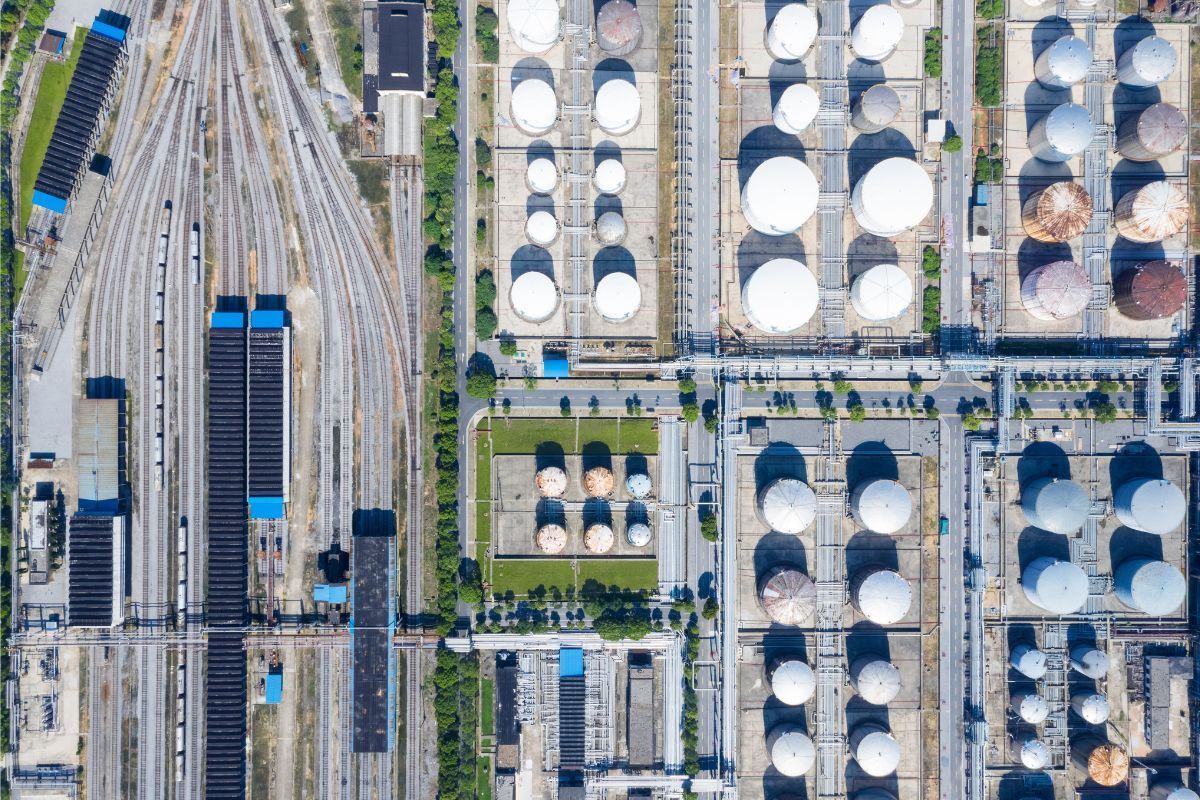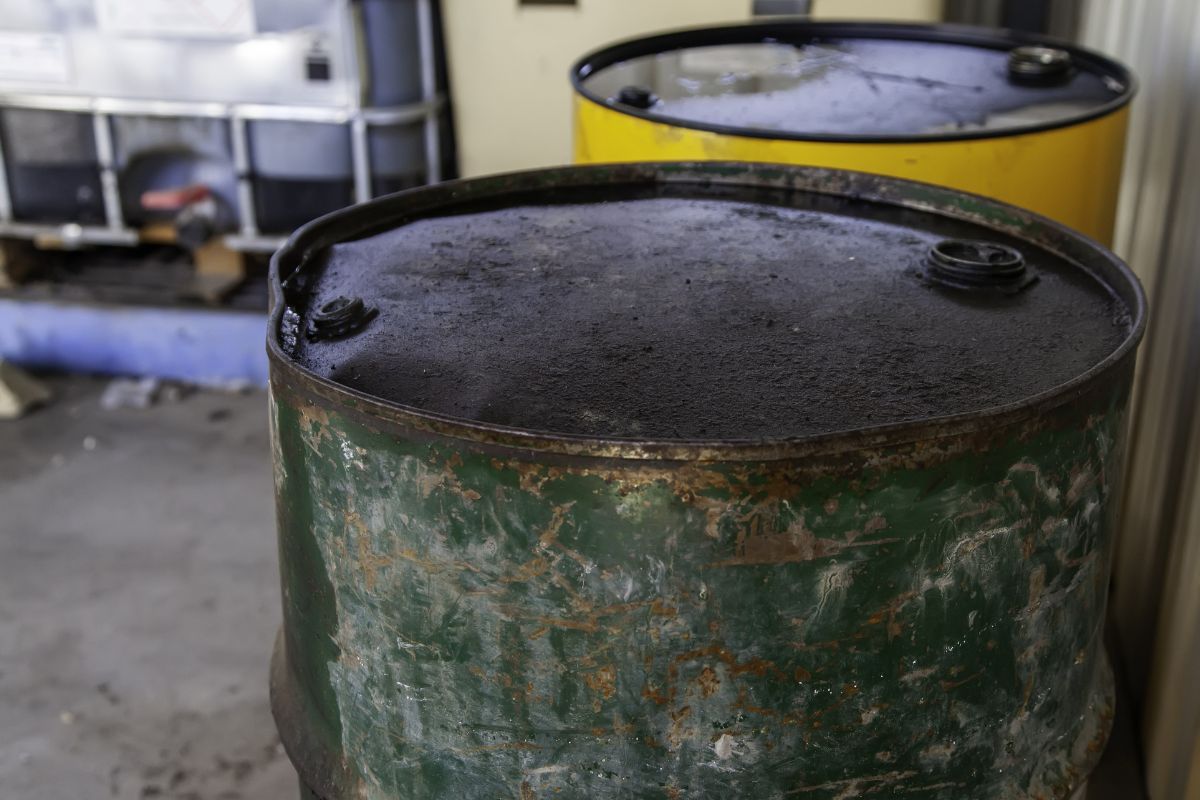How to Reduce Workers’ Compensation Claims in Oilfield Operations
See How We're Different
Or Call Us: (281) 823-8262

Oilfield operations rank among the most hazardous industries, where the risk of injury is a constant concern. With workers’ compensation claims often resulting in significant costs and operational disruptions, managing these risks effectively is crucial. Between 2001 and 2021, fewer than 0.1% of workers' compensation claims exceeded $2 million in losses, yet these mega claims highlight the potential financial impact of serious incidents in the field. Understanding how to reduce claims not only protects workers but also safeguards company resources and reputation. This article explores practical strategies tailored for oilfield operations to minimize workers’ compensation claims and improve overall safety.
Understanding the Risks in Oilfield Operations
Oilfield work involves complex machinery, heavy equipment, and often unpredictable environments. A study analyzing Ohio workers' compensation data from 2001 to 2018 found that contact with objects and equipment caused the highest lost-time claim rate in the oil and gas extraction industry. This insight underscores the importance of focusing safety efforts on equipment handling and workplace hazards. The nature of oilfield operations means that workers are frequently in close proximity to large, moving parts, which can lead to serious injuries if proper safety protocols are not followed. Training programs that emphasize situational awareness and proper equipment use are essential in mitigating these risks.
Moreover, subsea blowout preventer systems, critical for offshore operations, face frequent failures due to damaged elastomeric seals. Such mechanical issues can lead to accidents or costly downtime, emphasizing the need for rigorous maintenance and inspection protocols. The integrity of these systems is paramount, as they are the last line of defense against uncontrolled oil and gas releases, which can have catastrophic environmental and economic consequences. Regular training on the latest technologies and best practices in maintenance can help ensure that personnel are equipped to handle these critical components effectively.
With the U.S. Congress recently advancing the Pipeline Safety, Modernization, and Expansion Act of 2024, new federal standards aim to enhance pipeline safety and reduce liability risks. Compliance with these updated regulations is essential for companies seeking to lower the likelihood of accidents and subsequent workers’ compensation claims. The legislation not only addresses the physical infrastructure of pipelines but also emphasizes the importance of adopting advanced monitoring technologies that can detect leaks or weaknesses in real-time. For more details on this legislation, see Pipeline Safety, Modernization, and Expansion Act of 2024.
In addition to legislative changes, the oil and gas industry is increasingly turning to data analytics and artificial intelligence to predict and prevent accidents before they occur. By analyzing historical data, companies can identify patterns and potential risk factors, allowing them to implement targeted safety measures. This proactive approach not only enhances worker safety but also contributes to operational efficiency, reducing downtime and costs associated with accidents. As technology continues to evolve, the integration of smart systems into oilfield operations will likely play a crucial role in shaping a safer working environment.
Implementing Comprehensive Safety Training Programs
Effective safety training is the foundation for reducing workplace injuries. In oilfield operations, where hazards are numerous and varied, tailored training programs can make a significant difference. Training should cover proper equipment use, hazard recognition, emergency response, and safe work practices.
Regular refresher courses help keep safety top of mind, especially in a labor market described as still very tight despite cooling off last year. Businesses continue to seek workers, making it vital to onboard new hires with thorough safety education to prevent costly claims. Patrick Coate from NCCI highlights this ongoing demand for labor, which can sometimes lead to rushed hiring and training processes if not managed carefully.
Integrating hands-on simulations and real-world scenarios into training can improve retention and readiness. For example, demonstrating the consequences of improper equipment handling can reinforce the importance of following protocols. This approach aligns with findings that contact with objects and equipment is a leading cause of lost-time injuries in the industry.
Moreover, leveraging technology such as virtual reality (VR) can elevate the training experience. VR allows trainees to immerse themselves in a simulated environment where they can practice their skills without the risk of real-world consequences. This innovative method not only enhances engagement but also provides a safe space for workers to make mistakes and learn from them. Studies have shown that immersive training can lead to better retention of safety protocols and a more profound understanding of potential hazards.
Additionally, fostering a culture of safety within the organization is crucial. Encouraging open communication about safety concerns and near-miss incidents can empower employees to take ownership of their safety and that of their colleagues. Regular safety meetings and feedback sessions can create an environment where safety is prioritized, and everyone feels responsible for maintaining high standards. This proactive approach not only helps in reducing incidents but also boosts morale, as workers feel valued and heard in their contributions to workplace safety.
Enhancing Equipment Maintenance and Inspection
Regular maintenance and inspection of oilfield equipment are critical to preventing accidents caused by mechanical failures. The study on subsea blowout preventer systems revealed that leakages from damaged elastomeric seals were a major failure point worldwide. Addressing such vulnerabilities proactively reduces the risk of incidents that could lead to workers’ compensation claims. Moreover, the implications of equipment failure extend beyond immediate safety concerns; they can also result in significant financial losses and damage to a company's reputation. A single failure can halt operations, leading to costly delays and a ripple effect throughout the supply chain.
Establishing a strict maintenance schedule and using predictive analytics to anticipate equipment failures can help companies stay ahead of problems. Maintenance teams should be trained to identify early warning signs and report issues promptly. Implementing a digital maintenance management system can enhance this process by providing real-time data and analytics, allowing for more informed decision-making. Such systems can track maintenance history, schedule inspections, and even predict when a piece of equipment is likely to fail based on historical performance and usage patterns.
Additionally, investing in higher-quality parts and seals can extend equipment life and reliability. This proactive approach not only improves safety but also reduces downtime and repair costs. Companies can also benefit from conducting regular training sessions for their maintenance personnel, ensuring they are up-to-date with the latest technologies and best practices in equipment care. Furthermore, fostering a culture of safety and accountability within the workforce encourages employees to take ownership of their roles in the maintenance process, leading to a more vigilant and proactive approach to equipment management.
Promoting a Safety-First Culture
Creating a culture where safety is prioritized at every level of the organization can dramatically reduce workplace injuries. When employees feel empowered to speak up about hazards and participate in safety initiatives, the entire operation benefits. This proactive approach not only enhances the physical safety of the workplace but also contributes to a more positive and productive work environment, where employees feel valued and respected. A safety-first culture can lead to increased job satisfaction, lower turnover rates, and a stronger overall company reputation.
Leadership commitment is key. Managers and supervisors should lead by example, consistently enforcing safety rules and recognizing safe behavior. This fosters trust and encourages workers to stay vigilant. Additionally, leaders should engage in ongoing training and development to stay informed about the latest safety practices and technologies. By demonstrating their commitment to safety through continuous learning, leaders can inspire their teams to prioritize safety in their daily routines and decision-making processes.
Safety programs that include incentives for accident-free periods or suggestions for hazard mitigation can motivate employees. Open communication channels and regular safety meetings help maintain awareness and address emerging risks promptly. Furthermore, incorporating feedback from employees into safety protocols can enhance the effectiveness of these programs. When workers see that their input is valued and acted upon, it reinforces their commitment to maintaining a safe work environment. This collaborative approach not only empowers employees but also cultivates a sense of ownership over workplace safety, ultimately leading to a more resilient organization.
Moreover, integrating technology into safety initiatives can further enhance the culture of safety within the organization. Utilizing tools such as mobile safety applications or wearable devices can provide real-time data on workplace conditions and employee behaviors. These technologies can facilitate immediate reporting of hazards and streamline communication regarding safety protocols. By embracing innovation, organizations can stay ahead of potential risks and ensure that safety remains a top priority, adapting to the evolving landscape of workplace safety challenges.
Leveraging Technology for Risk Management
Advancements in technology offer new tools to enhance safety and reduce workers’ compensation claims. Wearable devices can monitor worker health and environmental conditions, alerting teams to potential dangers before incidents occur. For instance, smart helmets equipped with sensors can detect fatigue levels and environmental hazards, providing real-time feedback to workers and supervisors. This proactive approach not only safeguards employees but also fosters a culture of safety within the organization, encouraging workers to prioritize their well-being.
Drones and remote sensors provide real-time data on equipment status and site conditions, allowing for quicker responses to hazards. These technologies complement traditional safety measures and enable more precise risk management. By utilizing aerial imagery and thermal imaging, companies can identify potential issues such as equipment malfunctions or unsafe working conditions from a safe distance, minimizing the need for personnel to enter potentially dangerous areas. Furthermore, the data collected can be analyzed to identify trends and recurring issues, leading to more informed decision-making and enhanced safety protocols.
Integrating digital record-keeping and claims management systems ensures timely processing of workers’ compensation claims. Over 60% of claims are paid within 90 days of filing, reflecting the importance of efficient claims handling for both employees and employers. The use of artificial intelligence in claims processing can streamline workflows, reducing the administrative burden on human resources teams. By automating routine tasks, organizations can focus on more complex claims that require personalized attention, ultimately improving the overall claims experience for employees. Additionally, data analytics can help identify patterns in claims, enabling companies to implement targeted interventions that further reduce the incidence of workplace injuries.
Managing Workers’ Compensation Costs Effectively
Workers’ compensation premiums in the oilfield sector have seen fluctuations, with an 11% increase reported in 2022, bringing rates back to 2019 levels. Controlling claim frequency and severity directly impacts these costs.
Companies can reduce premiums by investing in safety programs, maintaining low injury rates, and working closely with insurers to implement loss control measures. Early return-to-work programs and effective claims management also help minimize financial impact.
Understanding that the average workers’ compensation claim costs about $41,000 highlights the value of preventive strategies. Even a small reduction in claims can translate into substantial savings.
Moreover, fostering a culture of safety within the workplace is paramount. This involves not only training employees on proper safety protocols but also encouraging them to actively participate in identifying potential hazards. Regular safety audits and employee feedback sessions can uncover overlooked risks, allowing companies to address them proactively. When workers feel empowered to voice their concerns and contribute to safety initiatives, it often leads to a more engaged workforce and a noticeable decline in incidents.
Additionally, leveraging technology can play a crucial role in managing workers’ compensation costs. Implementing data analytics to track injury trends and claim patterns can provide valuable insights into the effectiveness of current safety measures. Wearable technology, such as safety vests equipped with sensors, can monitor workers’ movements and detect unsafe conditions in real-time. By integrating these advanced tools into their safety programs, companies not only enhance their preventive strategies but also demonstrate a commitment to worker well-being, which can further improve morale and productivity on the job site.
Final Thoughts on Reducing Workers’ Compensation Claims
Reducing workers’ compensation claims in oilfield operations requires a multifaceted approach. Prioritizing safety training, equipment maintenance, and fostering a safety-first culture are essential steps. Staying compliant with evolving regulations, such as those introduced by the Pipeline Safety Act, further strengthens risk management. Regular audits and assessments of safety protocols can help identify potential hazards before they lead to accidents, ensuring that all employees are aware of the risks associated with their roles.
Moreover, implementing a robust reporting system for near-misses can encourage workers to communicate unsafe conditions without fear of reprisal. This proactive strategy not only enhances safety but also cultivates a sense of shared responsibility among employees. When workers feel empowered to speak up, it leads to a more engaged workforce that is committed to maintaining a safe working environment.
Leveraging technology and managing claims efficiently complement these efforts, helping companies protect their workforce and control costs. By focusing on these strategies, oilfield operators can create safer work environments and reduce the financial burden of workers’ compensation claims. Advanced data analytics can also play a crucial role in identifying trends in workplace injuries, allowing companies to tailor their safety programs to address specific vulnerabilities. Furthermore, investing in wearable technology can provide real-time monitoring of workers' health and safety, offering an additional layer of protection.
For more insights on workers' compensation trends and industry data, visit
PropertyCasualty360's study on mega claims. Understanding the nuances of these claims can aid in developing targeted strategies that not only mitigate risks but also enhance overall operational efficiency.
Frequently Asked Questions
Q: What is the most common cause of lost-time injuries in oilfield operations?
A: Contact with objects and equipment is the leading cause of lost-time claims in the oil and gas extraction industry.
Q: How quickly are most workers’ compensation claims paid?
A: Over 60% of workers’ compensation claims are paid within 90 days of filing, indicating prompt processing in most cases.
Q: How can companies reduce workers’ compensation premiums?
A: Investing in safety programs, maintaining low injury rates, and effective claims management can help lower premiums.
Q: What recent legislation impacts oilfield safety standards?
A: The Pipeline Safety, Modernization, and Expansion Act of 2024 introduces updated federal safety standards for pipelines and oilfield operations.
Q: Why is equipment maintenance important in reducing claims?
A: Proper maintenance prevents mechanical failures that can lead to accidents and injuries, reducing the likelihood of workers’ compensation claims.










